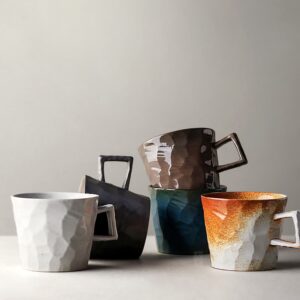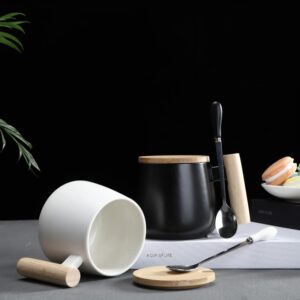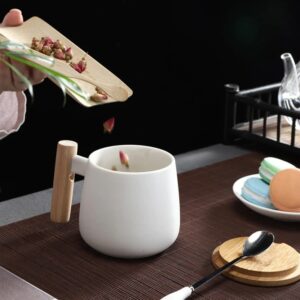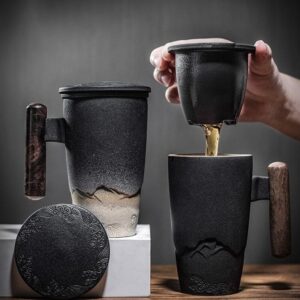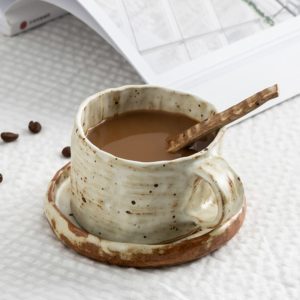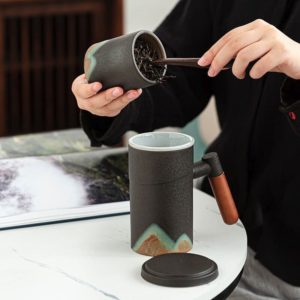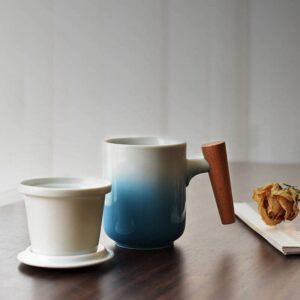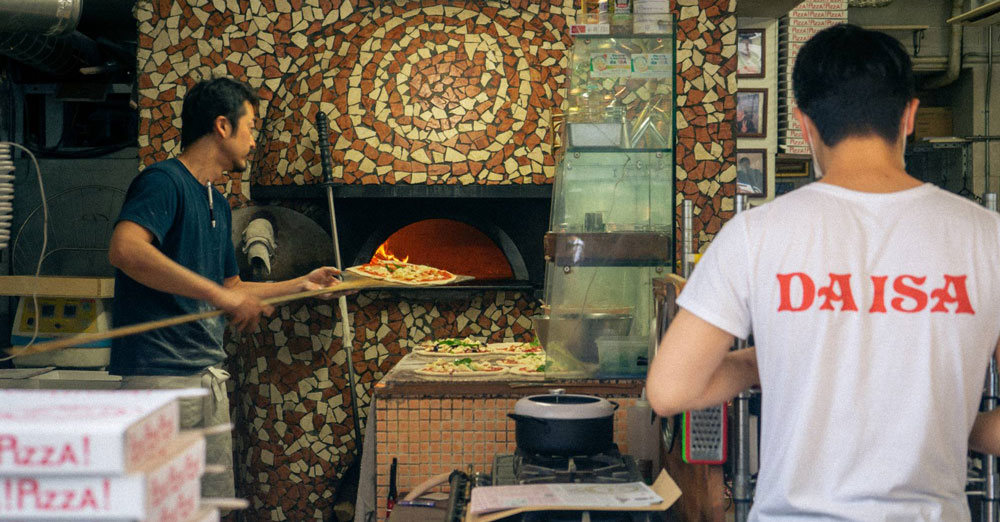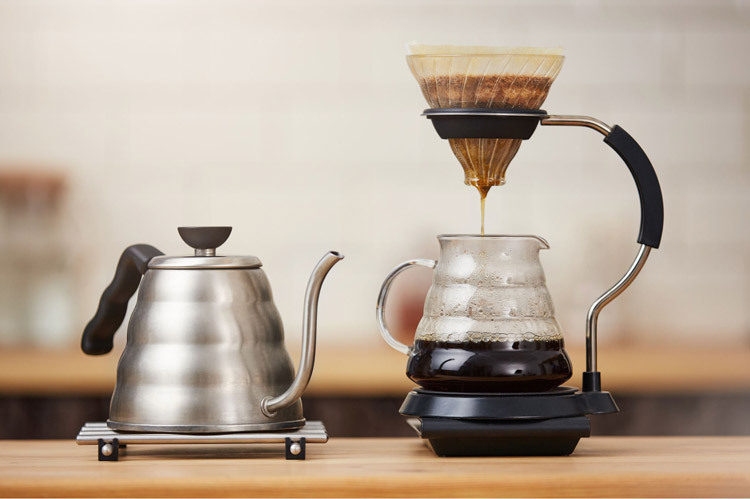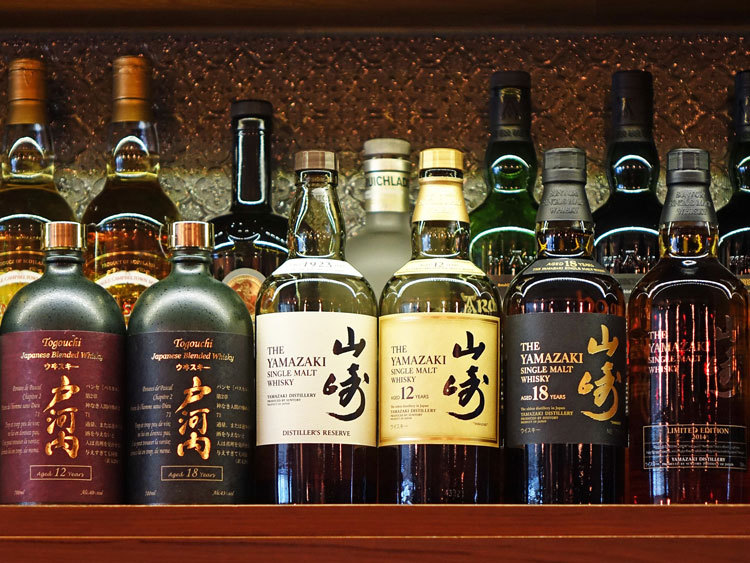If there were one culture that could be considered truly universal, it would be coffee culture. With so many ways to brew, mix and indeed drink the beloved bean-based beverage, you’d be hard-pressed to find someone who knew it all… yes, even your annoying friend who won’t shut up about their Chemex Coffee Maker would struggle to name all the methods to brewing the best cup of joe.
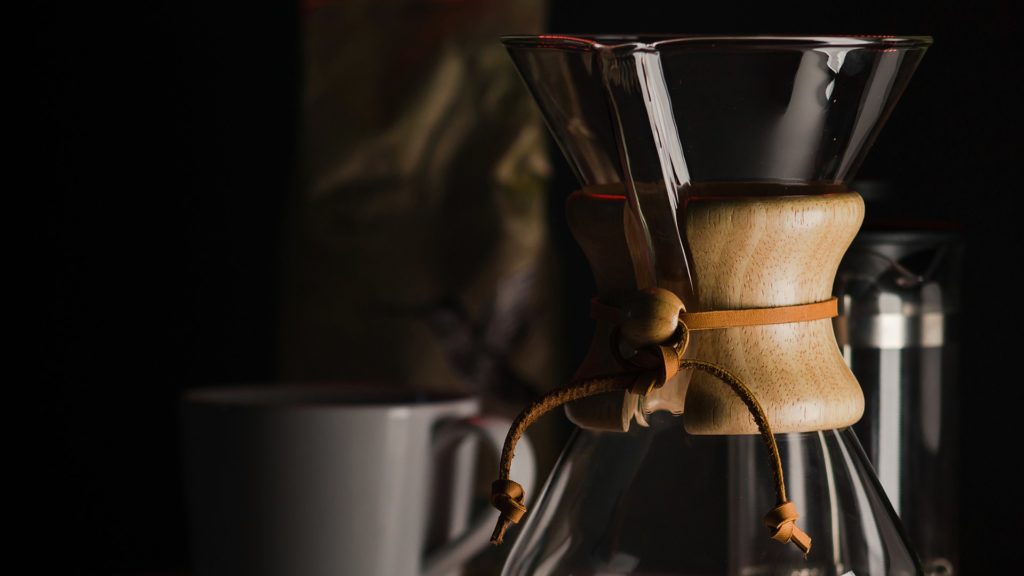
One of the most significant areas of contribution to this culture is Japan, whose dedication to hand-crafting the best brew has made it one of the standout countries to find new and experimental ways of making coffee. Japanese manufacturing companies such as Hario and Kalita have designed some of the most renowned coffee brewing devices in the world. With staple items such as the V60, and the Wave making waves in the industry, washing up onto every coffee aficionado’s doorstep.
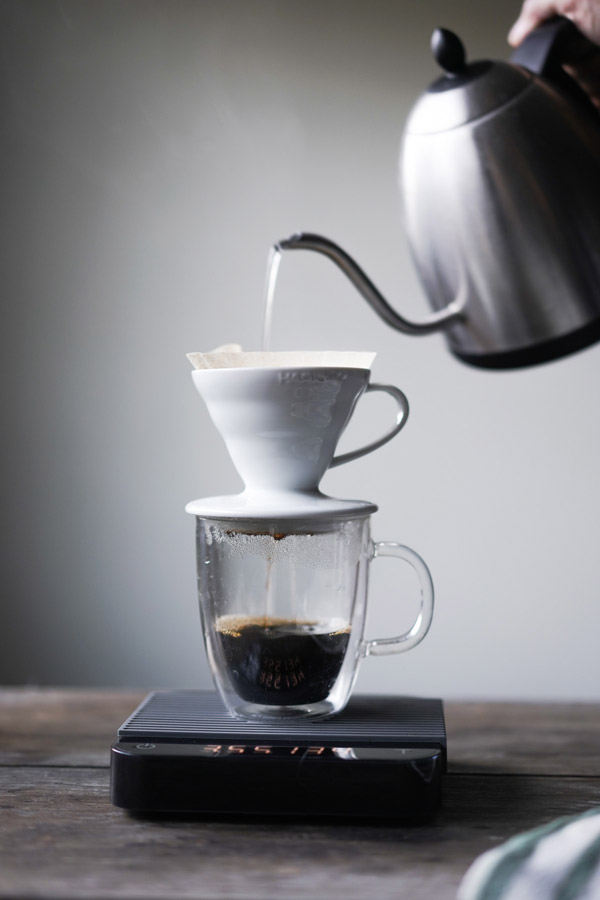
And it’s not just speciality tools that have made Japan such a leading player in the coffee game, but also the variety in ways in which it is both produced and consumed by the country. Ramped up on roasteries, chains, and concept cafés, modern coffee culture has seeped into every level of Japanese society. Cans of to-go coffee can be found in almost every train station vending machine, while 24-hour convenience stores such as 7/11 offer their own variety of freshly-brewed coffee, alongside specific seating areas to sit and drink with your friends. You can get coffee almost anywhere in Japan in almost any form, with the country sporting many famous instant brands, off-kilter alternatives, and an array of iconic ground and whole bean bags to boot.

Japan is so obsessed with the bean-based beverage that in 2020 alone, they imported 1.15 billion American dollars worth of the stuff, making the country the 7th largest importer of coffee in the world. That’s a big number and with the nation fervently embracing the current third wave coffee movement, it’s likely to get even bigger.

So why is coffee so big in Japan? The answer could simply be because coffee is dope, and the Japanese like dope stuff (I mean, come on, have you played any Japanese video games, watched any anime or listened to the incredible sounds of Japanese City Pop over the past few decades?). However, here at Japan Nakama, we intend to go a little deeper, venturing into the history of the nation’s obsession, and extracting the notes that made it such a revolutionary affair.
It Started with the Dutch…

Traditionally a tea-drinking culture, Japan was first introduced to coffee by Dutch traders in Nagasaki in the 1700s, and later by the Portuguese, during the country’s isolation period between the mid-1600s to mid-1800s. Rejected at first because of its “burnt” taste, it wasn’t until the late 1800s that coffee began to slowly trickle its way into the market.
The first official coffee shop, Kahiichakan, was opened by Ekei Tei, otherwise known as Tsurukichi Nishimura, in Ueno, in 1888. Inspired by his years as a student living abroad in France, Tei endeavoured to emulate the style of European coffee houses, where he witnessed artists and writers gathering to socialise while sipping their favourite brew.

This image is provided by Lehtikuva Oy. You can download the image by logging into www.lehtikuva.fi and making a search with the image ID 1311968
Tei’s shop managed to bring the bohemian lifestyle of 19th century France to Japan and, despite closing after only five years, instigated a ripple effect, inspiring many later cafes and offering an alternative to the traditional Kissaten tea-shops of the country. At this point, coffee became “fashionable among the intelligentsia and the upper middle class,” due to its Western origins which made it seem exotic and somewhat of a rarity.

It wasn’t until 1908 when many Japanese went to work in Brazil’s famous coffee plantations, that coffee culture began to gain a critical mass. With 75% of them living and working in São Paulo, the widespread emigration led to a rise in interest for coffee in both nations, continuing until 1940; this is largely the reason why you will find many people in Brazil of Japanese descent.
Tadao Ueshima: The “Father of Coffee”

In 1933, the coffee revolution began to fully take hold of Japan, when entrepreneur Tadao Ueshima founded the famous Ueshima Coffee company in Kobe. Established initially as a western food store Ueshima soon found his passion in coffee and strived to make the drink as popular in Japan as it was in the west.

Dedicating his life to the perfection of the perfect brew, Ueshima is known as the “Father of Coffee” in his homeland, taking the Japanese way of life, synonymous with efficiency, discipline, and grace, and gearing it towards coffee production. He later went on to establish the All Japanese Coffee Association in 1980 – an organisation of five industry groups working together “to unify the coffee industry in Japan.”
Yet, with conflict comes cutbacks, and as the country began to ban western products in the advent of World War Two, in order to maintain a more nationalistic value system, coffee beans became restricted. When the ban was lifted, after the war, coffee slowly trickled back into the market but was still considered by many to be a luxury product. It wasn’t until 1969, when Ueshima created the first-ever mass-produced canned coffee drink, that coffee burst in popularity, finding its way into every household, of any income level, in Japan.

Embittered by the time he bought a coffee at a station kiosk, only to have to ditch it to board his train after only taking a sip, Ueshima endeavoured to create a new, portable, and affordable way of drinking his favourite “mysterious beverage.” While not an immediate success, UCC Milk Coffee has since exploded in popularity, selling over 15 billion over the course of its 53-year lifespan and breaking the Guinness World Record as the longest-selling ready-to-drink canned coffee brand to boot.

Stirring up the craze for canned coffee, and inspiring many other brands, such as Suntory Boss and Georgia to follow suit, Ueshima’s innovative answer to coffee on the go marked a significant change in the way coffee was consumed, proving that everyone should be able to enjoy the smooth taste of coffee, no matter the place and no matter the paycheck.

As café culture rose in prevalence all around the world, with “second wave” coffee culture causing chains to spring up and explore the rich avenues of higher-quality coffee, Japan had found itself falling behind. Kissatens and cans went a long way to establish the foundations of Japan’s booming obsession with the beverage, but it wasn’t until chains started to pop up around the country that the culture began to focus on the experience of it all; sitting, drinking and enjoying coffee as an activity, rather than simply another area of Japanese city’s hectic on-the-go lifestyle.
Douter, for one, emerged in the 1980s and quickly became the go-to place to get your daily cup. Opening the first European-styled café in Harajuku, in 1980, Douter specialised in roasting coffee, yet not through the standard method of air-roasting, in which a fluid bed of hot air is passed over the beans, but instead opting for a more experimental approach, utilising an open flame method in order to best retain the flavour of the coffee beans.

Lauded as the best coffee chain in Japan, the company has since grown exponentially, opening its first coffee plantation in 1991 in Kona District, Hawaii, and its second only four years later.
Ginza Renoir, another chain, came much earlier than Douter. Established in Nihombashi in 1964, during the postwar economic boom, Ginza Renoir was the predecessor to an earlier 1957 café, based in Yotsuya. Venturing to maintain the 60s and 70s style of classic café culture, Ginza Renoir is famed for its dedication to nostalgia, offering an interior design philosophy that employs an air of vintage sophistication, “hotel room cafe, with carpets, cushy seats and staff wearing white and black uniforms.”

And of course Starbucks. How could we not mention the coffee giant? While generally passed off as generic, horrendously homogenised, and exemplifying Western capitalism with a capital C, it would be remiss to not discuss the monumental effect that the Seattle-originating coffee house has had on Japanese coffee culture. “[A] beloved Japanese institution,” the chain, since arriving in Japan in Ginza in 1996, has moved to open over 1,600 stores in city streets, countryside locations, and rest stops across the nation. Typifying the company’s motivation to fit a branch wherever possible, Starbucks and Japan’s fast-moving, always-busy, always-on-the-move attitude to work and life, have become synonymous with one another.

Japan was the first country outside of the US where the chain opened a store; it disallowed smoking from the get-go (an activity still allowed by many Kissatens across the country); and it provided a personal, hometown coffee shop sort of vibe, which came as a quiet respite from the elegant panache of earlier Japanese establishments. Starbucks almost single-handedly brought Japan into second wave coffee culture, appealing to connoisseurs and everyday coffee drinkers alike.

And besides McCafe, Mcdonald’s own-brand coffee branch which opened in Japan as a separate entity instead of simply an add-on to the American fast-food restaurant, no other international brand has made quite such an impact on Japanese coffee culture. Starbucks Japan is a place for everyone to enjoy, and, much like Ueshima, one that endeavoured to be progressive and inclusive in its business practice, opening its fifth deaf-language store in the world, in Kunitachi, Tokyo, in July 2020.
Third Wave in Spades

Generally emphasising high-quality coffee – with beans typically sourced from single-origin outputs, lightly roasted to bring out their distinctive flavours – the third wave coffee movement has exploded in prevalence on a global scale.

Specialised coffee (with equally specialised brewing methods) has become the hip new norm in third wave coffee culture, and Japan has embraced this movement with motivation. Pioneering the use of pour-over techniques such as the aforementioned Hario V60, in which hot water flows down and through coffee grounds, extracting flavours and aroma as it drips through the filter paper and collects in a cup or pot underneath. Similar to the style of drip coffee brewed using home coffee machines, the pour-over technique has become interchangeable with Japanese coffee culture, taking the pride and craft found in traditional Kissatens and transposing it to the contemporary world of java juice.

A prime location to observe this newer, more refined fashion in coffee brewing is Tokyo, where the city’s independent coffee culture has grown exponentially. Cafés such as Arise Coffee Roasters endeavour to provide a space where people can enjoy a huge variety of bean and beverage types, away from the hectic nature of inner-city life. Established in 2013 by Hayashi Taiju, in Kiyosumi-Shirakawa, the café typifies a more intimate approach to coffee culture, with piles of burlap coffee bags lumped around a medium-sized Fuji Royal Coffee Roaster, making it feel more akin to a cluttered workshop or an art studio than a traditional coffee house.

With over 16 years in the coffee industry before starting ARiSE, Taiju was inspired by his many interactions with customers over their various attitudes toward their preferred brew. Connecting through a shared delight for determining specific brewing preferences, ARiSE has become synonymous with Japan’s intimate and personal approach to coffee consumption, emphasising taste over turnout and exploring the myriad ways to enjoy the versatile drink.
Sporting a multitude of varieties, with new and freshly roasted ideas available daily, ARiSE is third wave coffee made manifest, selling unique blends of ground and whole bean bags to satiate Taiju’s dream for “people to use […] beans as they like, for people to enjoy good coffee at home and not just at cafes.”
And ARiSE is just one drip in the Japanese indie café pour-over, with concept cafes such as Tokyo’s Switch and Onibus Coffee carrying the baton in the nation’s obsession with speciality coffee. See below for YouTube coffee connoisseur, The Right Roast’s insightful journey into the world of Tokyo’s independent cafe culture.
In fact, the third wave coffee movement has become so integrated with Japanese culture that James Freeman of Oakland-based Blue Bottle Coffee, a pioneer of the current artisanal coffee trend, opened the company’s first Tokyo-based café in Kiyosumi in 2015. Feeling a kinship to the practices of Kissatens, Freeman saw a connection in the way his company brewed coffee with the Japanese, implementing meticulous attention to detail into each and every cup.

And it doesn’t stop there as third wave coffee even finds its notes in Japanese pop culture, playing a huge role in many anime such as Tokyo Ghoul, in which a small cafe in Tokyo serves as a sanctuary for ghouls of the 20th ward.

The Final Drip

Coffee and Japanese culture go hand in hand. From instant brands to the multitude of on-the-go everyday methods of enjoying your favourite caffeinated commodity, it has managed to trickle down into every cul-de-sac of Japanese society. Canned products, chains and convenience store machines have made coffee accessible to everyone, everywhere all at once, while roasteries and artisanal coffee houses have brought third wave coffee culture firmly into the hearts of Japanese city life.

It is a match made in heaven, blending Japanese sensibilities with the best coffee beans on the market and leading to some of the most profound innovations in coffee consumption in history. I mean, heck there’s even a garlic-based coffee alternative, made entirely from locally grown sources, that looks and tastes just like coffee.

Created by Yokitomo Shimotai, after he accidentally burnt a steak and garlic while waiting tables, he found that if you mix garlic with hot water, it produces an aroma not dissimilar from coffee. Stating that his alternative “contains no caffeine so it’s good for those who would like to drink coffee at night or pregnant women,” Shimotai’s method involves roasting garlic in an electric furnace, and then mashing it with a spoon so that it drips like coffee.
Patenting the method in 2015 and opening a workshop in Iwate Prefecture, Shimotai’s creative innovation is the embodiment of Japanese coffee culture. Electing for experimentation and dedication in the craft of creating the perfect cup, while ensuring that anyone from any walk of life can enjoy the smooth, bitter, and in Shimotai’s case, garlicky, notes of coffee.







































